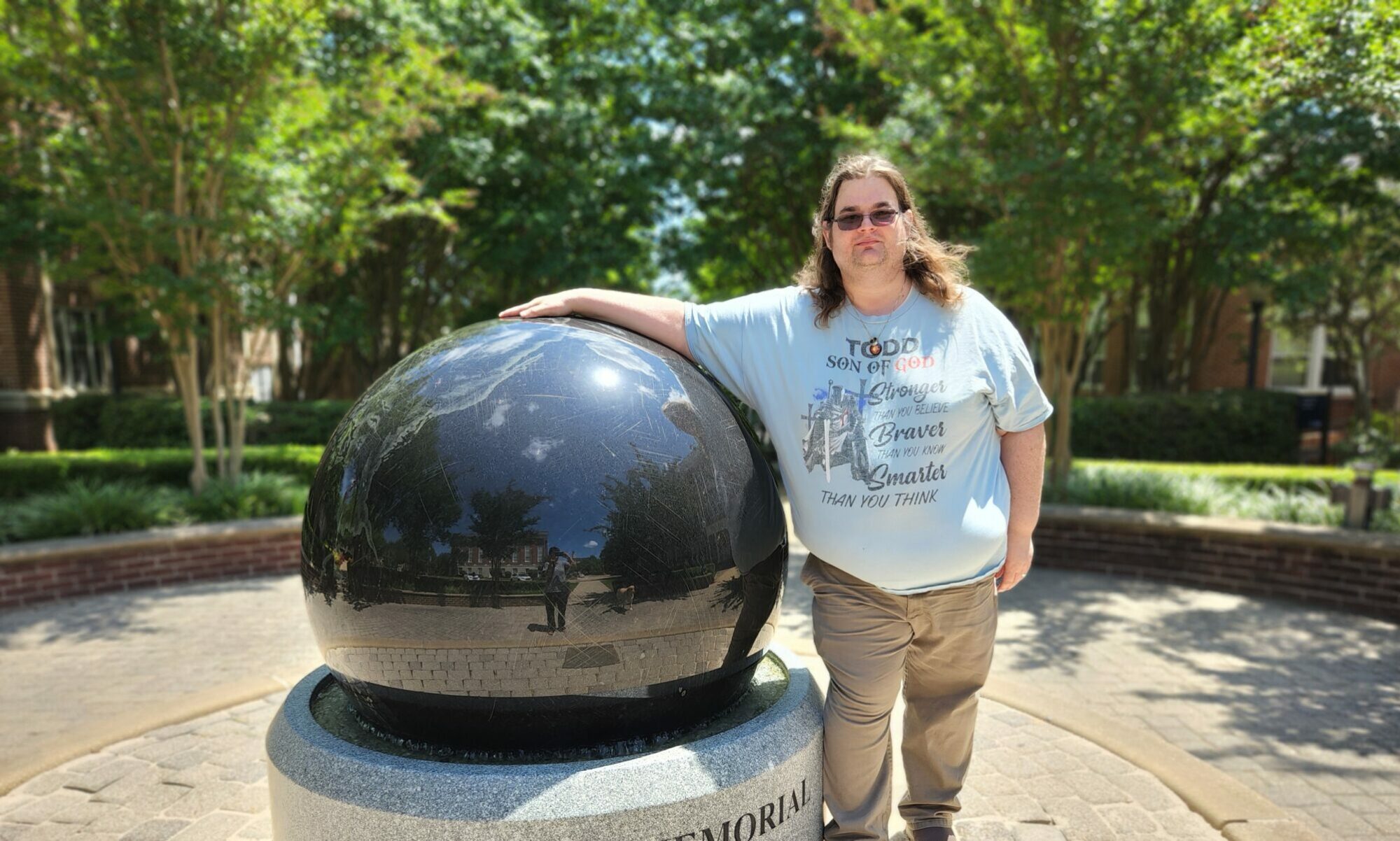Part 1: The Poolside Paradox — Visualizing the Three-Body Problem at Indian Point Teardrop
It was just a pool at Indian Point Teardrop—chlorinated, calm, and forgettable to anyone but me. But floating there, I saw something move—not in the water, but in the fabric of meaning itself. That’s when the three-body problem finally clicked—not in math, but in metaphor.
The three-body problem, in classical physics, describes a deceptively simple setup: three objects in space interacting gravitationally. Predicting how they move seems like it should be solvable. It isn’t. Their orbits spiral into chaos, each mass tugging the others unpredictably, endlessly. There’s no clean equation, no tidy map, just a storm of possibility.
As I floated in the Teardrop pool, I imagined the three bodies: myself, the Sun, and one other person—present in proximity, memory, or maybe just my thoughts. The gravitational pull between us felt real. I could sense the tension between mass, motion, and metaphor—how each moment of closeness or distance created its own strange orbit.
I saw the way decisions looped. How moments swerved. How trying to balance self, solar pull, and social force was like floating between stars with no propulsion but instinct and inertia.
And then, I left the Teardrop pool.
And left my phone charger behind.
—
Part 2: Rick, Morty, and the Charger Shift
That night, after drifting in the pool at Indian Point Teardrop and visualizing the cosmic chaos of the three-body problem—myself, the Sun, and one other gravitational question mark—I realized I’d left my phone charger behind. Small mistake. Ordinary, forgettable.
But I didn’t forget.
I changed superpositions.
Whether by instinct or intention, I made the decision to return—to re-enter the coordinates, revisit the timeline, and reclaim the object I had left behind. Something about that felt weightier than it should have. Like I had collapsed a possibility field just to retrieve a simple piece of plastic and copper. But as I moved through that act—literally rewinding my path—I started to feel the edges of something bigger.
That’s when I watched Rick and Morty Season 8, Episode 1.
Summer and Morty, in their universe, were punished for leaving behind a phone charger. And Rick—ever the manipulator of chaos and control—used it as justification for trapping them in a convoluted morality simulation. A matrix. A lesson. Or maybe just an experiment in narrative punishment.
That’s when it clicked.
Rick wasn’t just being a cartoon sociopath—he was a stand-in for the matrix logic itself: a force that notices even the smallest deviation and answers with disproportionate consequence. And by going back to get my charger, I hadn’t just altered my day—I had triggered a synchronicity. A storyline reflection. A loop that had to be acknowledged.
Maybe the charger wasn’t the point at all. Maybe it was the test. Or the key. Or the clue that I was inside something recursive. Rick’s punishment wasn’t just fictional—it was familiar.
And it all started at the Teardrop pool, when I changed my position in the simulation.
—
Part 3: The Misspelled Church and the Ocean Pull
Back on solid ground, away from the Teardrop pool and the cartoon matrix, Mississippi reasserted itself—humid, holy, and human. And just like celestial bodies with wildly different densities, two churches in South Mississippi began pulling at me from opposite ends of the spiritual spectrum.
On one side stood a church with a sign that reads “Lilly” with two L’s, a linguistic hiccup that never got corrected, as if the typo was too sacred to touch. And here’s where the simulation slipped: Rick is the actual pastor.
That’s not a metaphor.
The man behind the pulpit is named Rick. I had just watched Rick and Morty, had just left behind a phone charger, had just visualized the three-body problem at the Indian Point Teardrop pool—and then I found out that the literal Pastor Rick presides over a church orbiting spiritual entropy and phonetic anomaly.
On the other side of the gravitational pull stood another church, clean-cut and well-aligned, where Pastor Ransom leads with composure, structure, and a kind of spiritual geometry. If Rick brings grounded presence, Ransom brings symmetry.
I wasn’t attending either that day. I was just… caught between them.
Not as a tourist in the pews, but as the third object in a gravitational dance—unpredictable, pulled, reactive. I could feel it. One church called to the part of me that sees metaphor in misspelling. The other called to the part of me that craves symmetry and clarity.
Each church had its own mass.
Each pastor, their own force.
And me? I was the unpredictable orbit—a body in a system no simulation could stabilize.
—
Part 4: The Mississippi Trinity
In classical mechanics, the three-body problem is famous not for its precision—but for its unpredictability. You give it three simple masses and initial conditions, and it gives you chaos. And yet, there I was in South Mississippi, standing in the middle of a perfectly unstable trinity: myself, Pastor Rick, and Pastor Ransom.
Three masses.
Three minds.
Three points of gravity that, through some strange alignment, started to define the orbit I found myself in.
Pastor Rick wasn’t some chaos agent or cartoon echo. He was sincere, steady, and grounded in his role. But in the context of everything I’d just lived—visualizing the three-body problem at the Indian Point Teardrop pool, forgetting and retrieving my charger, then watching Rick and Morty where Rick punishes his family for doing the same—it was impossible not to feel the simulation wink at me.
The synchronicity wasn’t about his style.
It was about his name.
The fact that the real Rick stood at the pulpit in a church with a misspelled name the very day I wrestled with chaos, recursion, and cosmic messaging—it felt like alignment.
Pastor Ransom, by contrast, brings a more polished, structural gravitational field. His presence feels more defined, more anchored in clarity and tradition. His sermons are organized. His leadership resonates like a planet with consistent orbit—predictable, but powerful.
And me? Still the third object.
The one whose path is never quite the same.
Not because I can’t choose—but because I’m in motion between two fixed forces.
This isn’t a story of choosing sides. It’s a story of recognizing gravity. Recognizing that even when things seem like coincidence, there’s a dance playing out. One where names, signs, physics, and faith swirl around each other in ways that suggest a pattern just beyond our ability to map.
The three-body problem isn’t a puzzle to be fixed.
It’s a rhythm to be felt.
And maybe I was never being punished for leaving that charger behind.
Maybe I was just meant to feel the pull—and follow it back.
—
Conclusion: Gravity, Grace, and the Glitch
In the end, nothing about this felt planned. And yet everything felt placed.
A pool in South Mississippi, dubbed the Indian Point Teardrop.
A charger forgotten, then retrieved.
A Rick and Morty episode about punishment for the same.
One pastor named Rick.
Another named Ransom.
And me, orbiting it all.
Maybe it was just coincidence.
Maybe it was simulation.
Maybe it was God.
Or maybe, like the three-body problem itself, it doesn’t resolve into a single explanation. Maybe we’re not supposed to solve the equation, just experience the movement—to feel how certain names, certain events, and certain gravitational pulls collide in ways that suggest a pattern just beyond our ability to map.
I don’t claim to understand it.
But I’ve seen it.
And for a moment, in a chlorinated metaphor under the Southern sky, I was in the middle of something too precise to be random—and too strange to be staged.
If there’s a lesson, it might be this:
In chaos, look for rhythm.
In entropy, look for echoes.
And when life pulls you back over something as small as a phone charger—maybe go. You might find your position in the universe has shifted just enough to see it differently.
—
Disclaimer: This post was written with assistance from ChatGPT, an AI developed by OpenAI. While the writing process was collaborative, the events described are 100% truthful and based on real experiences.

